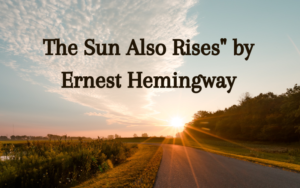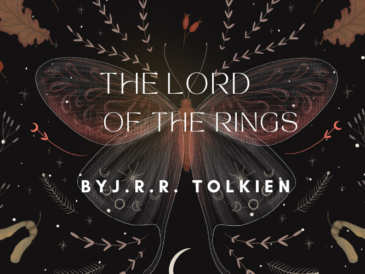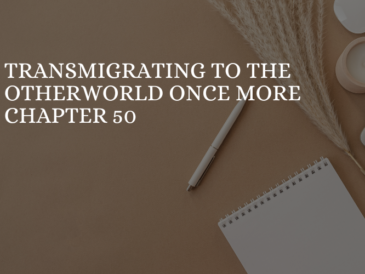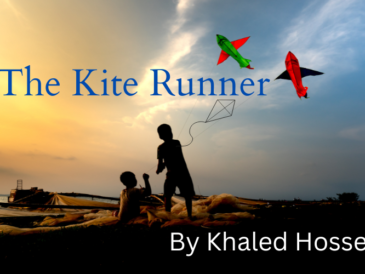Introduction
“The Sun Also Rises” features a diverse cast of characters. The Sun Also Rises” by Ernest Hemingway Who are struggling to find their place in the world after the trauma of World War I.
The protagonist, Jake Barnes, is a veteran who was injured in the war and can no longer have a sexual relationship. He is in love with Lady Brett Ashley, a free-spirited woman who is also struggling to find her place in the world.
Other characters include Robert Cohn, a writer. Who is always looking for a fight; Bill Gorton, Jake’s friend and drinking buddy; and Mike Campbell, Brett’s fiancé who is constantly jealous of her past lovers.
These characters are all part of the Lost Generation, a term coined by Gertrude Stein. To describe the disillusioned young people who came of age during World War I.
Hemingway portrays them with a mix of sympathy and detachment, capturing their struggles and their flaws with a spare, understated prose that has become his trademark.
Themes
“The Sun Also Rises” explores a number of complex themes that are still relevant today. The Sun Also Rises” by Ernest Hemingway
One of the main themes is disillusionment. The characters are all struggling to find meaning in their lives after the trauma of World War I. They are searching for a sense of purpose and direction, but they are often thwarted by their own flaws and weaknesses.
Another theme is the lost generation. The novel portrays a group of young people who are adrift in a world that has been shattered by war. They are struggling to find their place in a society that no longer makes sense to them.
Masculinity is also a significant theme in the novel. The male characters are all struggling to live up to a traditional notion of manhood, but they often fall short. They drink to excess, get into fights, and engage in other reckless behavior in an attempt to prove their masculinity.
Finally, the search for meaning is a major theme in the novel. The characters are all trying to find some sort of purpose in their lives, but they often come up short. They turn to drinking, travel, and other distractions in an attempt to fill the void, but they ultimately find that these things are not enough.
Through its exploration of these themes, “The Sun Also Rises” offers a powerful critique of the society of the time and continues to resonate with readers today.
Now Style
Ernest Hemingway’s writing style in “The Sun Also Rises” is characterized by its spare, understated prose and its focus on action over introspection.
Hemingway is known for his use of short, simple sentences, and his preference for concrete nouns and active verbs. He eschews adjectives and adverbs, instead relying on strong verbs and precise description to create a vivid picture of the characters and their surroundings.
The dialogue in the novel is also notable for its authenticity and naturalness. Hemingway captures the way people really talk, with all its hesitations, repetitions, and unfinished sentences.
The style of “The Sun Also Rises” is often described as “hard-boiled” or “minimalist. It has had a significant influence on subsequent generations of writers. Hemingway’s approach to style emphasizes clarity, directness, and economy of language, and his impact on the development of American literature cannot be overstated.
Overall, the style of “The Sun Also Rises” is spare, muscular, and highly effective in conveying the themes and characters of the novel. Hemingway’s mastery of language is on full display, and his writing continues to inspire and challenge readers to this day.
Setting
The setting of “The Sun Also Rises” is primarily in France and Spain in the 1920s. During the period after World War I known as the “Lost Generation.”
The novel opens in Paris, where the characters are part of the expatriate community of artists and writers. Who flocked to the city in the aftermath of the war. Hemingway vividly captures the bohemian lifestyle of the time, with its cafes, bars, and parties, and he shows. The characters navigating the city streets and the intricate social relationships that define their lives.
Later in the novel, the setting shifts to Pamplona, Spain. Where the characters attend the festival of San Fermín and witness the bullfights that are the highlight of the event. Hemingway portrays the thrill and danger of the bullfights with great skill, and he uses them as a metaphor for the struggle of life itself.
Throughout the novel, Hemingway’s descriptions of the settings are spare and evocative, capturing. The sights, sounds, and smells of the places the characters visit. His use of setting is not just descriptive, but it also serves to highlight. The themes of the novel and the struggles of the characters.
Overall, the setting of “The Sun Also Rises” is an integral part of the novel, and it provides a vivid backdrop against
t which the characters’ lives play out.
Symbolism
Symbolism is an important element of Ernest Hemingway’s “The Sun Also Rises,” with several recurring symbols used to represent larger themes and ideas.
One of the most prominent symbols in the novel is the bull. Bulls are a key feature of the festival of San Fermín, and they serve as a metaphor for the larger struggles of life. The bullfight itself represents the struggle between man and beast. The bull can also be seen as a symbol of the characters’ own internal struggles.
Another symbol in the novel is the sun. The title of the novel itself is a reference to the sun, and it represents the idea of a new beginning. The sun rises every day, bringing with it the possibility of change and renewal, and this is something that the characters are all seeking in their own lives. The Sun Also Rises” by Ernest Hemingway
Alcohol is another important symbol in the novel. The characters drink heavily throughout the story, and alcohol serves as a way for them to escape their problems and forget their troubles. The Sun Also Rises” by Ernest Hemingway
Finally, the train is another important symbol in the novel. The characters travel by train throughout France and Spain, and the train can be seen as a symbol of the passage of time. The fleeting nature of life. It also represents the idea of movement and change. The characters are constantly on the move in search of something they can’t quite find.




